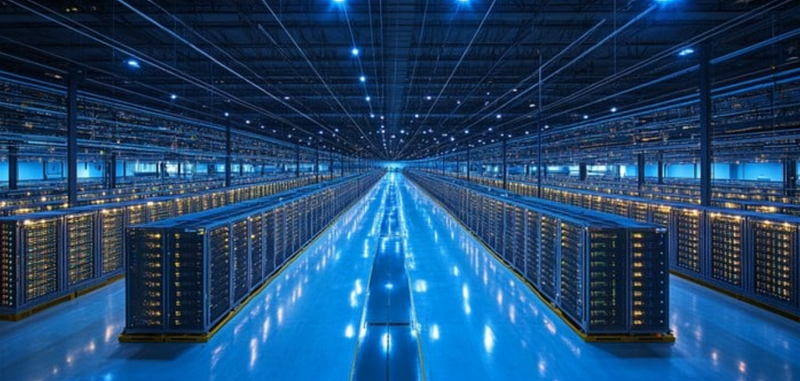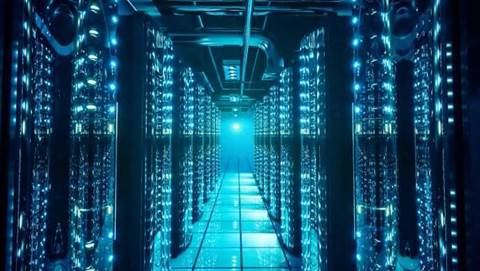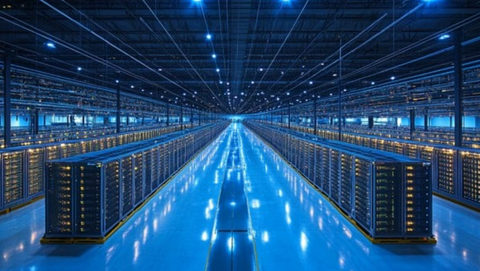The demand for AI has exponentially increased storage needs and transformed how data centres operate. At the same time, the more energy data centres use, the more their carbon footprints will increase.
How do we balance this conundrum of infrastructure growth while at the same time ensuring sustainability imperatives are met?
iTNews Asia speaks with Futoshi Niizuma, Seagate Technology’s Vice President for Asia Pacific and Japan (APJ) Business, to learn his insights on this topic.
iTNews Asia: How has the surging demand for AI increased storage needs and changed how data centres operate? How does this impact data centres in the region, particularly Singapore?
AI is not simply adding incremental demand; it is redefining the very architecture of data infrastructure. It places unprecedented demands on storage, power, and physical space. In fact, 97 percent of data centre professionals already anticipate a fundamental shift in storage needs driven by AI.
The core reason for such architectural transformation is data. To be more precise, the unprecedented increase in the value of data. In the age of AI, data is no longer just a by-product of operations; it has become the most valuable business currency. The ability to efficiently collect, store and train models on proprietary data is now more important than ever.
This transformation comes with significant energy and sustainability challenges. Global AI workloads are projected to consume 945TWH of electricity by 2030, more than the entire consumption of Japan. But the impact extends beyond just the energy use: it includes the carbon footprint, space constraints and operational complexity of managing infrastructure at unprecedented scale.
The pace of demand is now outstripping the industry’s historical capacity for growth, requiring urgent innovation across every layer of the data centre ecosystem.
In the Asia-Pacific and Japan region, the challenge is even more complex. Mature digital hubs such as Singapore, Japan, and South Korea face acute land constraints and strict energy caps, while emerging markets like India and Australia are navigating uneven infrastructure and evolving regulation.
Across the region, data centres must scale compute and storage rapidly, all while adhering to stringent sustainability standards. This is driving a critical need for innovation in storage density, cooling, energy efficiency, and lifecycle management.
iTNews Asia: Could you elaborate more on the multifaceted nature of data centres’ TCO, which integrates both CapEx and operational costs — and directly bears on sustainability.
TCO goes far beyond upfront CapEx. It encompasses long-term operational costs such as energy, cooling, staffing, and maintenance – all deeply connected to sustainability outcomes. For example, high energy consumption drives up both operating costs and carbon emissions, while short equipment lifespans, despite lower initial costs, lead to more frequent replacements, higher expenses and contribute to e-waste that undermines long-term sustainability efforts.
Meanwhile, AI workloads demand significantly higher compute and storage densities, increasing power consumption, heat generation and overall infrastructure utilisation. These factors drive up operational expenses, particularly in energy use and cooling systems, which are the most carbon-intensive components of data centre operations.
As AI continues to drive unprecedented data growth, managing these ongoing costs becomes critical. TCO and sustainability are inseparable and go hand in hand. By recognising that operational efficiency and sustainability are increasingly aligned, decisions that reduce energy demand, optimise space utilisation, or extend equipment lifecycles will lower both financial and environmental impact. In effect, sustainable operations are no longer a nice-to-have, but a core driver of long-term cost efficiency.
iTNews Asia: Your recent 2025 Decarbonising Data report highlights that businesses face expectations — and regulatory requirements — to operate data centres both cost-efficiently and sustainably. It also reveals that Sustainability is still an afterthought in decision-making. What do you see as existing barriers for sustainable data centre operations? What are the sustainability trade-offs and repercussions if these barriers are not addressed?
Based on our findings, the three biggest barriers are: high energy consumption, raw materials requirements and physical space constraints.
Energy use is the most pressing challenge, cited by over half of respondents, 53.5 percent. As AI adoption accelerates, we are seeing a sharp rise in compute and storage needs, driving up energy requirements and carbon emissions. This pressure is especially acute in regions like Singapore and Korea, where access to renewable energy remains limited and grid capacity is under growing strain.
Raw materials requirements and space constraints are also significant roadblocks. Nearly half of the respondents expressed concern about the environmental toll of sourcing materials for data infrastructure, particularly embodied carbon and the full lifestyle impact of hardware.
Yet despite this awareness, these concerns are not yet consistently influencing procurement or operational decisions. Space is another major constraint, particularly in high-density and land-scarce markets, which restricts the ability to adopt more sustainable infrastructure at scale.
In addition, infrastructure and acquisition costs continue to be notable barriers, particularly for organisations facing pressure to balance sustainability with cost-efficiency.
Without action, these barriers risk locking organisations into short-term, cost-driven decisions resulting in higher emissions, rising operational costs and missed opportunities for long-term resilience and competitiveness.
iTNews Asia: How challenging is it to reconcile these two expectations because the more energy data centres use, their carbon footprints will similarly increase?
Balancing rapid infrastructure growth with sustainability imperatives is one of the most urgent and complex challenges facing data centre operators today. As AI and data-intensive workloads grow, energy consumption inevitably rises – unless that energy comes from clean sources, so too does the carbon footprint. At the same time, renewable or cleaner energy sources come with price tags as well.
This creates a fundamental tension: businesses must scale to stay competitive, but they must also operate within environmental and regulatory limits. Reconciling these priorities demands a fundamental shift in how infrastructure is designed, procured and managed, with efficiency, circularity and long-term impact built in from the start.
The opportunity lies in smarter and more future-ready technology innovations such as energy-efficient processing units, liquid cooling systems and higher areal density storage solutions like Heat-Assisted Magnetic Recording (HAMR) drives. HAMR drives support AI at scale without increasing energy, raw materials or physical footprint, deploying energy-efficient systems, optimising workload placement, extending hardware lifespans and accelerating the transition to renewable energy. These not only reduce environmental impact but also build resilience and cost-efficiency into the foundation of digital growth.
iTNews Asia: How can we shift this mindset and move the needle on making TCO and sustainability, competing priorities, more aligned for organisations in Asia?
The first step is recognising that TCO and sustainability are not opposing forces but deeply interconnected. The key lies in embedding these principles into procurement, planning and lifecycle management to drive meaningful impact. Sustainable practices not only reduce operational outlays over time, but they also transform environmental responsibility into a powerful competitive differentiator.
In Asia, this mindset shift is especially critical given the region’s complex and dynamic market landscape – from limited land availability and uneven infrastructure to fast-evolving regulatory frameworks.

While there is no one-size-fits-all solution and strategies must be locally tailored, one truth is universal: sustainability should be framed not as a compliance burden, but as a core enabler of resilience and competitiveness.
- Futoshi Niizuma, Seagate Technology’s Vice President for Asia Pacific and Japan (APJ) Business
The second essential shift is recognising sustainability as an ecosystem challenge, one that requires ecosystem-wide collaboration. Suppliers, customers, and policymakers must unite around shared standards, circularity programmes, and transparent reporting. Only through this collective approach can organisations move beyond trade-offs and unlock alignment between operational efficiency and carbon reduction, ultimately future-proofing their operations.
iTNews Asia: What are companies doing now to reduce the environmental impact of their data centre operations? What actionable solutions can they immediately take? Have many been successful?
We are already seeing companies beginning to turn intent into action. According to the Decarbonising Data report, 61 percent are sourcing renewable energy, 58 percent are investing in renewable infrastructure, 42 percent are implementing AI-driven solutions to better determine their data storage or operational needs, and 47 percent are migrating workloads to the cloud.
However, while these efforts mark important progress, they address only part of the challenge. A truly effective sustainability strategy must go beyond energy sourcing. Operators need to procure equipment with durability in mind, integrate efficiency into design from the start, and push for greater visibility across their supply chains.
iTNews Asia: What are the sustainability strategies that organisations can take? Given that many face physical space constraints, how can they better manage the ever-expanding data volumes from AI use?
In APJ, regulators in Singapore, Japan, and Australia are already encouraging these shifts, but adoption varies widely. The next step is scaling these practices so that sustainability becomes embedded in everyday business decisions, not treated as a side initiative. An effective sustainability strategy must tackle data centre operations at multiple fronts – including how data is stored and processed.
Building on this foundation, the next critical step is adopting technologies designed for scale. Solutions like higher areal density storage allow businesses to expand capacity and support AI-driven workloads without increasing energy consumption, raw materials use or physical footprint. For example, new-generation hard drives have tripled areal density from 1TB to 3TB per platter, enabling a single drive to hold 30TB of capacity within the same physical footprint as a 10TB drive.
These denser drives provide more storage, consume less power and require no additional space. Such upstream decisions deliver downstream benefits, improving carbon reporting and resource optimisation. Combined with energy-efficient technology and AI-driven energy management, organisations can significantly reduce energy consumption and emissions.
Finally, extending the lifecycle of infrastructure remains a powerful yet underutilised driver. Evaluating the full environmental cost of hardware, including embodied carbon, enables organisations to reduce unnecessary replacements and shrink their environmental footprint. Procurement teams must look beyond upfront costs and prioritise durability, energy efficiency, and longevity. Sustainability should be embedded as a fundamental procurement criterion, not an afterthought.
Together, these strategies offer organisations a clear, actionable roadmap to make measurable and lasting sustainability gains while addressing the growing demands and constraints of the AI era. As more companies adopt these approaches, the opportunity isn’t just to reduce impact, but to lead with resilience, innovation, and long-term efficiency.









